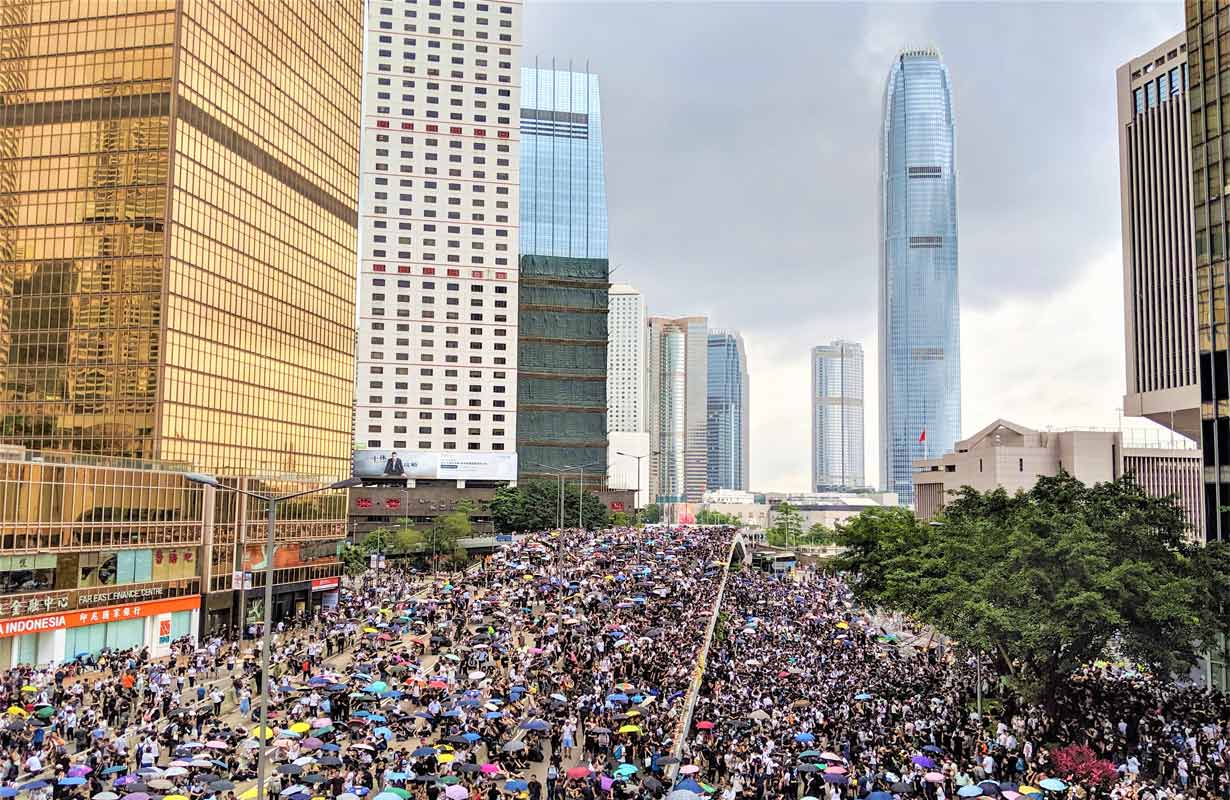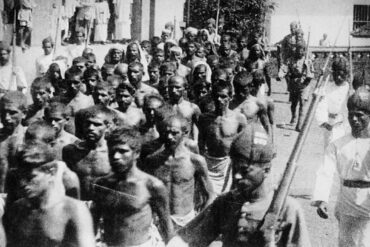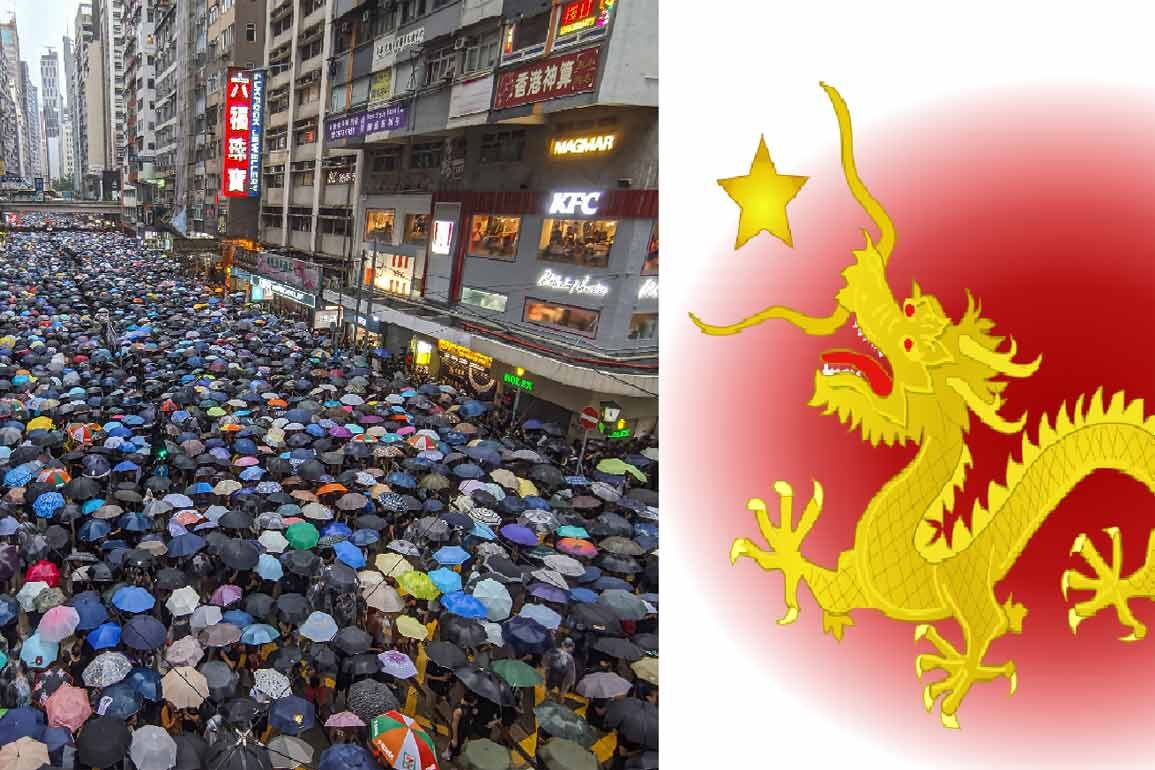After a year that saw massive protests involving more than a million people, voices of dissent are rattling the streets of Hong Kong again in 2020. Beijing’s recent moves, under the cover of the pandemic, to penalize rebellious elements within the Hongkongese people in the name of preserving national security reiterate its old tendencies to disregard the highly-held ‘one country, two systems’ model specifically made for governing its special administrative regions (SARs).
China has two of these special territories, namely, Hong Kong and Macau. Both were former colonies, of Britain and Portugal respectively, with a distinctively different and unique politico-economic system from the mainland. While the former was made part of the People’s Republic in 1997, the latter joined two years later in 1999.
What is behind the recent protests?
If 2019 was about an extradition law involving the handover of convicts from Hong Kong to mainland China, 2020 is about a national security legislation targeting the acts of subversion and secession among Hongkongers, and thereby preventing the voices of dissent against the communist regime in Beijing.
The new legislation would also allow Beijing to set up branches of its intelligence agencies to formally operate from the autonomous territory. It would even allow Beijing to bypass the elected Legislative Council (LegCo) of Hong Kong. In another piece of legislation, anyone insulting the Chinese national anthem can be punished with up to three years in prison. These moves invited protests from the Hongkongese people.
In a recent move, the Chinese state-run news agency, Xinhua, has released a partial draft of the proposed national security legislation on 20 June, allowing Beijing to establish a committee in the SAR headed by the chief executive, and subject to oversight by the central government in Beijing. The document also specifies setting up of a national security agency in the city, again to be overseen by the central government to guide implementation of the law, as well as “collect and analyze national security intelligence”. This would eventually give Beijing the power to push for a forceful passing of the law despite opposition from the city’s residents, thereby making it a tool to crack down on the democracy movement and voices of dissent.
On 9 June 2020, the SAR marked the first anniversary of the beginning of its first massive pro-democracy protests. It is widely perceived as the first of such popular expression of dissent since 1997. Similarly, on 1 July, this year, the city is preparing to commemorate the anniversary of its handover from Britain to China.
One of the other reasons behind the protests that erupted since the last week of May, this year, was the cancellation of all commemorative events by Beijing citing the reasons of pandemic and the need for social distancing. This decision was widely perceived as one that was specifically meant for preventing Hongkongers from observing the anniversary of Beijing’s notorious Tiananmen Square Massacre of 4 June 1989, in which hundreds of protesting students were killed by the Chinese troops, rolling tanks into the crowd. However, defying the prevailing government ban, Hong Kong demonstrators held night vigils to mark the anniversary of the event.

The protests are also a sign of political aspirations of the youth for democracy and freedom that are increasingly coming under threat from Beijing. Many of the protesting youth come from middle-class families who wish to preserve their unique culture against all the subversive moves by Beijing aimed at accomplishing the monolithic ‘One China’ policy.
Hong Kong is slowly losing its preferential status as Asia’s premier financial centre
With the new national security law given effect, the United States has announced that it is stripping Hong Kong of its preferential trade status it enjoyed under the US law, effectively damaging the megacity’s attractiveness as a premier global financial and trading hub in Asia.
The goodwill that the city has earned over the past decades has been dissipating due to the political circumstances currently prevailing in the SAR. The protests and violence last year had also proven detrimental to the territory’s global image. Hong Kong’s Chief Executive, Carrie Lam, has been accused of taking pro-Beijing stances since the protests erupted last year with her support to the proposed extradition law that imperilled the high degree of autonomy Hong Kong had. Doing the same in 2020, she is busy defending and explaining Beijing’s new laws and policies to the protesting Hongkongese in the streets.
How the SAR is different from mainland China
This can be understood from the fact that Hong Kong is measured separately in the Human Development Index (HDI) and is ranked among the top five countries in the latest index of 189 countries and territories. At the same time, mainland China is ranked far below, at 85.
Moreover, Hong Kong finds its place among Taiwan, Singapore and South Korea, a league of states referred to as the ‘Four Asian Tigers’, due to their fast and exceptional economic growth achieved since the 1960s, thereby transforming themselves into developed economies. Unlike the northern Chinese provinces that speak the Mandarin language, Hongkongers prefer to speak Cantonese, mostly spoken in the southern coastal provinces of the mainland, and, of course, English, being a former British colony and one of the key global trading and financial centres.
Even though Hong Kong is technically part of China, socially and economically it maintains a safe distance from what is happening in the mainland. The metropolis also maintains a unique way of life akin to Western liberal democracies. It is characterized by a politico-economic system, culture and way of life different from the mainland, greatly influenced by the British system of governance.
How the territory took shape
It has been 23 years since Hong Kong was made a part of the People’s Republic of China after putting an end to 155 years of British rule that began with the end of the First Opium War (1839-42), given effect by the Treaty of Nanking, acknowledging the Chinese defeat in the war. Before this, Hong Kong was just one of the fishing island villages that spread across the southern coast of China. It was the advent of the British that changed the fate of this territory forever.
Since 1997, Hong Kong is administered by something which is known as the ‘Basic Law’. This document allows the SAR to enjoy “executive, legislative, and independent judicial power, including that of final adjudication”, except in matters relating to defence and foreign affairs. The SAR also has a currency different from that of the mainland – the Hong Kong Dollar.
The SAR today consists of the Hong Kong Island, Kowloon, the New Territories and many other tiny islands in the southern coast of China spread over 1,092 square kilometres. It is in one of these islands – the Lantao Island – the 112 ft. tall ‘Big Buddha’ statue stands atop a hill surrounded by lush greenery, comparable to the New York’s ‘Statue of Liberty’.
Let me put it this way – today, Hong Kong is to China what New York City is to the United States. New York may be widely regarded as the ‘City of Skyscrapers’, but as a matter of fact, Hong Kong has more of them when you count the projections touching the skyline – 303 skyscrapers compared to New York’s 237!
China’s megacities – Hong Kong’s new rivals
The Chinese megacities in the mainland like Shenzhen lying geographically close to the British-made world-class port in Hong Kong took full advantage of their location to economically prosper themselves, in a manner even challenging the likes of Hong Kong.
Moreover, Shenzhen, once a poor agricultural village, has surpassed Hong Kong’s GDP in 2018 with an intensified manufacturing activity that began only about four decades ago. China used this ‘bridge’ of Hong Kong to connect itself to the world of international business and trade, and exploited its favourable position as a manufacturing hub duly well to channelize its products to all corners of the globe.
With the recent US decision to strip Hong Kong of its preferential trading status, the special advantage that Hong Kong held is poised to suffer heavily, making other Chinese cities like Shenzhen, or Guangzhou, or Shanghai more popular. Today, these cities are already attractive manufacturing hubs.
The likelihood of declining importance of Hong Kong is playing to China’s advantage to re-integrate the SAR into its wider sphere of influence – an absolute change of status quo.
What after 2047 – when the ‘one country, two systems’ model expires
The agreement signed between China and Britain tells that Hong Kong’s democratic and capitalist system would remain unchanged for 50 years since the handover – until 2047, the year that marks the expiry of the ‘one country, two systems’ model.
However, the practical effect of this stipulation on Hong Kong’s way of life and the questions of its sovereignty is not mutually agreed upon by China and Britain. It seems Beijing is not patient enough to wait until 2047.
Beijing considers the treaties signed with Britain as merely historical in nature without any practical significance in the present, but London sees it as a legally binding agreement to which it is committed to uphold. Irreconcilable differences like these combined with an increasingly ambitious Beijing trying to consolidate its suzerainty over the SAR, the future of Hong Kong looks grim.
In a recent controversial statement, the deputy director of China’s Hong Kong and Macau Affairs Office, addressed to the Hongkongese people, said that the manner in which they behave today will determine the SAR’s post-2047 status when China takes hold of it in the complete sense.
The future looks bleak
Despite all its perceived economic losses, the residents of Hong Kong are determined to continue their fight led by a group of young and firebrand leaders to uphold their promised civil and political rights. The chances of the Asian Tiger overcoming these challenges posed by the roaring Chinese Red Dragon to reinvent itself in a way to restore its former position look bleak considering the unfolding state of affairs.







